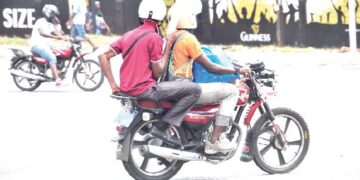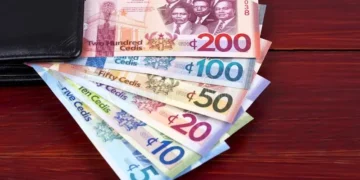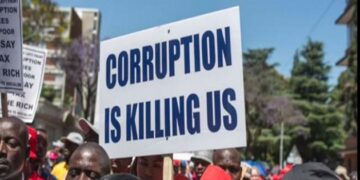The Sahel now hosts the world’s terrorism epicentre, according to the Global Terrorism Index of 2024. The Index (GTI) 2024 highlights that terrorism in the Sahel now surpasses the situation in the Middle East. The central Sahel (Burkina Faso, Mali, and Niger) now accounts for over half of all deaths from terrorism globally(Vision of Humanity) (Security & Sustainability).
In Burkina Faso, the Index reports that terrorist-related deaths increased by 68% despite a reduction in attacks, illustrating the severity and lethality of the incidents (Vision of Humanity).
Compiled by the Institute for Economics and Peace (IEP), the GTI highlights significant shifts in the landscape of global terrorism. It notes that terrorism-related deaths surged by 22%, reaching 8,352, the highest since 2017. Conversely, the number of terrorist incidents declined by 22% to 3,350, indicating that attacks are becoming more lethal. Furthermore, the number of countries reporting terrorist incidents dropped to 50.
The GTI 2024 underscores a dramatic shift in the epicentre of terrorism from the Middle East to the Central Sahel region of sub-Saharan Africa. For the first time in the report’s 13-year history, a country outside Afghanistan or Iraq has topped the index. Burkina Faso experienced nearly 2,000 deaths from terrorism across 258 incidents, making up almost a quarter of global terrorist fatalities. Despite a 17% decrease in attacks, terrorism-related deaths in Burkina Faso increased by 68%, underlining the growing severity of the violence.
In Western democracies, the United States accounted for 76% of terrorism-related deaths in 2023, although the overall number of incidents reached a 15-year low.
The report also highlights significant improvements in Iraq, where deaths from terrorism have plummeted by 99% since their 2007 peak, dropping to 69 in 2023.
The concentration of terrorism has intensified, with ten countries accounting for 87% of all terrorism-related deaths. The report revealed that over 90% of terrorist attacks and 98% of terrorism deaths occurred in conflict zones, emphasising the strong correlation between conflict and terrorism.
These findings indicate a shifting and increasingly deadly terrorism landscape, particularly in the Sahel, and underscore the need for comprehensive strategies addressing both the immediate security challenges and underlying socio-economic issues fuelling extremism in these regions.
Who are the terrorists in the Sahel?
Terrorism in the Sahel region, according to various sources such as the GTI 2024, International Crisis Group (ICG), United States Institute of Peace (USIP), and the Armed Conflict Location and Event Data Project (ACLED), is driven by several extremist groups. The most notable among them are:
1. Jama’at Nasr al-Islam wal Muslimin (JNIM): Formed in 2017, JNIM is a coalition of several jihadist groups, including al-Qaeda in the Islamic Maghreb (AQIM), Ansar Dine, the Macina Liberation Front, and al-Mourabitoun. It is affiliated with al-Qaeda and operates mainly in Mali, Burkina Faso, and Niger.
2. Islamic State in the Greater Sahara (ISGS): This group emerged in 2015 after splitting from al-Mourabitoun and pledging allegiance to the Islamic State (ISIS). ISGS operates primarily in the border areas of Mali, Burkina Faso, and Niger and is known for its brutal attacks on both civilian and military targets.
3. Boko Haram: While originally based in Nigeria, Boko Haram has extended its operations into the Sahel, particularly in Niger and Chad. The group is infamous for its violent insurgency aimed at establishing an Islamic state in the region.
4. Ansaroul Islam: This group, based in Burkina Faso, was founded by Malam Ibrahim Dicko in 2016. It has been responsible for numerous attacks in northern Burkina Faso.
5. Al-Qaeda in the Islamic Maghreb (AQIM): Although part of JNIM, AQIM continues to operate as a distinct entity. It has a long history in the region, engaging in kidnappings, bombings, and other terrorist activities.
6. Katiba Macina (Macina Liberation Front): Led by Amadou Koufa, this group operates mainly in central Mali. It is part of JNIM and has been involved in numerous attacks against Malian and international forces.
Vision of Humanity, however, identifies ISGS and JNIM as the two main terrorist groups causing the most harm to the region.
Aims of the terrorist groups
The GTI 2024, ICG, United Nations Security Council Reports on Sahel terrorism, the African Center for Strategic Studies’ Sahel terrorism analysis, and Human Rights Watch’s Reports on Sahel conflicts identify the objectives of these various terrorist groups as being driven by religious, political, and socio-economic motivations.
Firstly, various sources say these extremist and jihadist groups aim to establish Islamist States by overthrowing secular governments with the sole purpose of establishing states governed by their interpretation of Sharia law. This includes JNIM, which is aligned with al-Qaeda, and ISGS, affiliated with the Islamic State.
Secondly, they aim to expand their territorial control and influence by exploiting weak state presence and governance in remote areas. By controlling more territory, they can create safe havens for their operations and recruit more members.
Additionally, they intend to destabilise and weaken state authorities through targeted attacks on government institutions, military forces, and infrastructure to create a power vacuum that they can exploit – a strategy that undermines the ability of governments to govern and provide security effectively.
Furthermore, the promotion of a global jihadist agenda is one of the key motivators for these groups’ actions. Some of them are part of the broader global jihadist movement. They contribute to the global struggle against perceived enemies of Islam, including Western countries and their allies. This aligns them with larger international terrorist networks like al-Qaeda and the Islamic State.
Apart from the above-mentioned objectives, they also aim to acquire resources (mineral mines) and the necessary funding for their operations. These groups, thus, engage in various illicit activities such as kidnapping for ransom, smuggling, and trafficking of arms, drugs, and people. Some of them have also annexed mining concessions and are engaged in illegal artisanal mining which comes with devastating effects on the already-climate-ravaged region by polluting water sources with mercury, cyanide, and other lethal chemicals; decimating forest reserves that protect rare flora and fauna and, in turn, exacerbating climate change through deforestation. These activities not only provide necessary funding for the terrorist groups but also disrupt local economies.
Modus operandi
These terrorist groups mostly operate by exploiting and leveraging local grievances such as ethnic tensions, economic disparities, and political marginalisation to gain support. They position themselves as defenders of marginalised communities, which helps them build local legitimacy and sustain their activities. This why they can easily recruit people from nomadic cattle-herding communities like the Fulani, who feel disrespected, dispossessed, and marginalised by their host communities.
These groups have also capitalised on the region’s instability and weak governance to expand their influence and conduct violent operations. Their activities have contributed to the significant increase in terrorism-related deaths and have severely impacted the security and humanitarian situation in the Sahel. Their actions contribute significantly to the instability and security challenges in the region.
Collateral effects of terrorism
The GTI emphasises the link between terrorism and organised crime in the Sahel, noting how human smuggling, arms trafficking, and established criminal networks exacerbate the security situation.
Vision of Humanity notes that the deteriorating security situation in the Sahel reflects broader issues of governance and socio-economic challenges, contributing to the region’s vulnerability to extremist influences.
Counter-terrorism efforts in the Sahel
Neither the governments of the Sahel nations nor the regional authorities and the international community have sat aloof to watch the tyranny of terrorism unfold. Many, an action has been taken and more are still being unfurled. They have come in a potpourri of military, diplomatic, and development strategies.
1. Military Operations
1.1. G5 Sahel Joint Force
Formed by Burkina Faso, Chad, Mali, Mauritania, and Niger, the G5 Sahel Joint Force aims to combat terrorism and organised crime through coordinated military operations across member states’ borders (African Center for Strategic Studies – Reports on G5 Sahel Joint Force).
1.2. Operation Barkhane
Led by France, Operation Barkhane supports regional armies in fighting terrorist groups. It provides intelligence, logistics, and aerial support. The operation, however, has faced criticism regarding its effectiveness and the perception of foreign intervention. (International Crisis Group – Analysis on Operation Barkhane).
1.3. African Union and UN Missions
The African Union (AU) and United Nations (UN) support various peacekeeping and stabilisation missions in the Sahel, including MINUSMA (the UN Multidimensional Integrated Stabilisation Mission in Mali), which aims to stabilise Mali and protect civilians (United Nations – MINUSMA mission updates).
2. Capacity Building and Training
2.1. European Union Training Missions
The EU provides training and advisory support to Sahelian security forces through missions like EUTM Mali (European Union Training Mission). These missions focus on enhancing the capabilities of local military and police forces (European Union External Action – EUTM Mali reports).
2.2. United States Africa Command (AFRICOM)
AFRICOM conducts training exercises and assists Sahelian militaries, focusing on improving counter-terrorism operations, intelligence gathering, and border security (United States Africa Command (AFRICOM) – Training mission details).
3. Development and Humanitarian Efforts
3.1. Sahel Alliance
The Sahel Alliance, a coalition of international donors and organisations, focuses on development projects aimed at addressing root causes of instability, such as poverty, unemployment, and lack of infrastructure. It aims to create conditions for long-term stability and resilience against extremist influence. (Sahel Alliance – Development project summaries)
3.2. United Nations Integrated Strategy for the Sahel (UNISS)
UNISS aims to enhance coordination among UN agencies in delivering humanitarian aid, promoting governance, and supporting socio-economic development in the region. (United Nations Integrated Strategy for the Sahel (UNISS) – Strategic goals).
4. Diplomatic Initiatives
4.1. Peace Agreements
Efforts to negotiate peace agreements between governments and insurgent groups have been part of the counter-terrorism strategy. For instance, the Algiers Agreement in Mali sought to bring lasting peace between the government and Tuareg rebel groups.
4.2. Regional Cooperation
The Economic Community of West African States (ECOWAS) and the African Union promote regional cooperation and collective security efforts to address cross-border terrorism threats (Economic Community of West African States (ECOWAS) – Regional security cooperation).
Is counter-terrorism in the Sahel becoming another form of terrorism?
- Human rights abuses and mass killings of civilians
Counter-terrorism operations have faced criticism for human rights abuses by security forces, which can fuel local grievances and recruitment by terrorist groups (Human Rights Watch – Reports on counter-terrorism operations). For instance, HRW documented how, on April 9, 2020, Burkinabe soldiers summarily executed 31 men in a town called Djibo.
UNHCR also documented how state security forces, in the name of counter-terrorism, raided the Mentao Refugee Camp, wounding at least 32 people and ordering them to vacate the area “within the next 72 hours or face death”.
In Niger, 102 civilians of Tuareg and Fulani communities were wiped out within days in Inates and Ayorou towns. Mass graves were subsequently discovered in the area, lending credence to the state-sponsored killing in the name of counter-terrorism.
Mondafrique in 2020 also reported similar attacks in other parts of Tillabery including Ouallam and Torodi. UN MINUSMA also recorded attacks in the Menaka Region on the Malian side of the border.
In Mali, MINUSMA, again, documented 101 summary executions of Fulani civilians by state forces in the central regions of Mopti and Ségou, according to Le Monde in 2020.
That report also provided evidence of torture against civilians as well as enforced disappearance.
Most of these atrocities by state security forces in the Sahel were carried out in the name of counter-terrorism by two specialised army and gendarmerie units known as GFAT (now referred to as GFSN) and USIGN, operating in northern Burkina Faso, according to a 2018 HRW report.
Mali’s National Guard, according to HRW, is also responsible for most of the atrocities against civilians in Mondoro.
In the first quarter of 2021 alone, over 300 civilians were killed in counter-terrorism operations in Western Niger. Within that quarter of 2021, some 203 innocent civilians were killed in less than a week, from 16 to 21 March, according to the Institute for Security Studies (ISS). Some civilians told ISS in Niamey that the military’s actions against civilians create the impression that “terrorists are on both sides.”
- Media blackouts and attacks on journalists
In the name of counter-terrorism, media houses, and journalists are being gagged, killed, and censored in junta-led Burkina Faso, for example. Journalists who dare criticise the Burkinabe authorities are promptly arrested by the state and incarcerated. As a result, press freedom and freedom of expression by the citizenry have been curtailed in Burkina Faso.
According to Reporters Without Borders, the junta has made the environment for journalism and access to diverse news reporting “much worse.” RSF said: “The ‘patriotic treatment’ of news and information dear to Capt. Ibrahim Traoré, the transitional president, is gradually taking precedence over the possibility of rigorous journalistic reporting.”
RSF notes that despite having 80 newspapers, 30 TV stations, 185 radio stations, and 100 news websites, “the deterioration of the political and security environment has brought an increase in outside pressure and self-censorship.”
Again, RSF mentioned that “cases of intimidation of journalists have been on the rise in recent years,” citing as an example that: “During the two coups in 2022, soldiers stationed themselves at the entrance to the national TV channel, controlling who went in and out, and forcing journalists to read their press releases on the air.”
It added: “The ruling junta has also muzzled foreign (mainly French) media by suspending Radio France Internationale (RFI), France 24 and Jeune Afrique, and by deporting certain journalists.”
Additionally, RSF said: “The government also intimidates local journalists, as evidenced by the month-long suspension of Radio Omega in August 2023. The same year, a PR agency close to the presidency organised a smear campaign against three Burkinabé journalists.”
RSF further indicated that “violence against journalists by both armed groups and the authorities has increased in recent years,” explaining: “Two Spanish journalists, David Beriain and Roberto Fraile, were killed in April 2021 – the first such deaths in more than 20 years – while reporting in the east of the country, near the Sahel’s so-called tri-border region where the borders of Burkina Faso, Niger and Mali converge and where several armed groups are active. It is not uncommon for reporters to be threatened or subjected to violence during demonstrations.”
The situation is no different in Mali, where RSF reports that “insecurity linked to the threat of terrorism, combined with political instability, compromises journalists’ access to information.”
It cited the holding in state captivity of French journalist Olivier Dubois for 711 days as indicative of the worsening environment for journalists.
Mali, according to RSF, has around 200 newspapers, more than 500 radio stations and several dozen TV channels, including regional ones. The media’s news coverage and programming, according to RSF, were “really diverse until the permanent suspension of French media outlets RFI and France 24 in April 2022.”
Also, it said: “Mikado FM radio, launched by the United Nations in June 2015 and hosted by local journalists, permanently shut down in November 2023.”
In Niger, another junta-led Sahelian nation, the Media Foundation for West Africa recently reported that “freedom of the press has been in real danger since the coup d’état of July 26, 2023. The crackdown on critical voices is so pronounced that having a journalist willing to testify openly about the ordeal of media men and women is an uphill battle.”
MFWA quoted Nigerien journalist Rachidatou Dramane (not her real name), as having said: “I think we’ve suffered enough already. I’d rather not talk to you than find myself in exile or prison after telling you what we’re going through right now.”
- Freeze on political activities/harassment of political opponents
In the name of the same counter-terrorism, some countries are terrorising their political opponents or critics and also suspending all political activities. A case in point is Mali, where on 10 April 2024, the council of ministers decreed that all political parties and associations across the country suspend their activities “until further notice.”
The following day, the Malian communications regulatory body (Haute autorité de la communication) issued an order to all media houses to cease “broadcasting and publishing the activities” of political parties and associations.
Similarly, in Burkina Faso, the junta administration decreed in September 2023, according to Reuters that there would be no elections to return the country to civilian rule until it was safe for all Burkinabés to vote. It is worth noting that the coup leaders of Burkina Faso, Mali, and Niger all rode on the back of counter-terrorism to topple their respective governments, which they accused of doing little to fight terrorism in the region. Even though they promised to take the counterinsurgency bull by the horn, the terrorism situation in the region has rather got worse, as Burkina Faso, per the GTI 2024, is now the world’s most terrorised region.
Analysis Counter-terrorism, it appears, has been a convenient political tool for the three junta-led Sahelian countries. They use it whimsically and capriciously to serve their causes and purposes. Ironically, that supposed protector is now becoming, in and of itself, a repressive and dangerous piece of equipment with which the juntas are terrorising their own people by targeting and killing innocent citizens; suppressing the voice of the people, killing free speech and free expression; and haunting and hounding political rivals while freezing all political activity. So, now the innocent citizens of these countries are trapped between two evils and neither seems the lesser. Should the innocent citizens caught in the middle run to the side of the ‘junta terrorists’ who are killing them just as the perceived real extremists or should they just embrace their ‘Pompeii’?






























